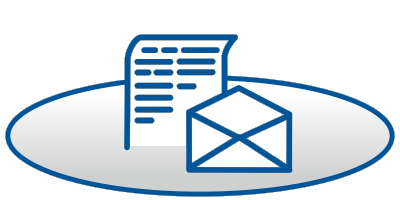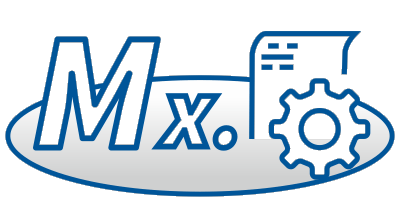Informix Machine Notes
Here you find actual Machine Notes to Informix Products that we prepared for you.
=================================
MACHINE SPECIFIC NOTES
FOR
IBM INFORMIX Dynamic Server 11.50.FC8 PRODUCT RELEASE
ON IBM AIX 5L 64bit
DATE: 08 Nov 2010
=================================
OS Information : Built on AIX 5L 5.3 Technology Level 4 SP 2.
Certified on AIX 6.1 and 7.1.
System Requirements
===================
1. This product was built on AIX 5L 5.3 Technology Level 4 SP 2 using the
following compilers:
IBM XL C/C++ Compiler 7.0.0.8
C Set ++ Runtime 8.0.0.0
2. AIX patch requirement:
AIX 5L Technology Level 4 service pack 02 or higher is required at
runtime on your OS.
AIX 5L 5.3:
APAR number IY66195
APAR number IY71363
APAR number IY83580
If the system is on the Technology Level lower than 6:
APAR number IY89007
If the system has the following libc version installed, APAR
number IY89597 is required:
bos.rte.libc 5.3.0.51
If the system is on Technology Level 5, the concluding service
pack (CSP) is required. Technology Level 6 is recommended.
If the system is on the following Technology Level, fix of IZ01229
is required:
Technology Level 6 - APAR number IZ01229
Technology Level 7 - APAR number IZ15400
AIX 6.1:
APAR number IZ13235
AIX 7.1:
September 2010 PTF for XL C for AIX, V11.1
3. The IBM Informix Dynamic Server requires that the drivers for
- Portable Streams Environment (PSE)
- Asynchronous IO (AIO)
be loaded on the AIX system where the IBM Informix Dynamic Server is
used. The IBM Informix Dynamic Server executables use entry points
defined by these drivers.
The PSE driver can be loaded using the "/usr/sbin/strload" command. The
AIO device can be enabled using either the AIX "smit" interface or by
doing the following.
To enable AIO after subsequent reboots, issue the following commands
as root:
/usr/sbin/chdev -l aio0 -a autoconfig=available
/usr/sbin/mkdev -l aio0
For further information, refer to the AIX documentation.
4. The UNIX graphical tools provided with this release require X Window
system X11R6 and Motif 2.1 or later runtime libraries.
5. The High Performance Loader utilities, onpload and ipload, require a
minimum of 35 MB of memory and 70 MB of swap space in order to run.
6. If you are using Java UDRs, please refer to "AIX Loader Domains" under
J/Foundation section for details.
7. IDS installer uses AIX file system expansion
If file system expansion is necessary for an installation, a warning will
be included in the preinstall summary dialog of the installation wizard.
At that point, the user can choose to cancel the installation if expansion
is not desired.
If the installation is performed in silent mode, file system expansion
occurs automatically without warning.
Only the install file systems can be expanded. File system expansion of
temporary directories will not occur, and insufficient available space in
temporary directories will cause the installation to fail. The only
exception to this is during launcher execution.
8. IBM Informix Dynamic Server uses the libraries and utilities provided by
the IBM Global Security Kit (GSKit) for data encryption and Secure Sockets
Layer (SSL) communication. The GSKit is bundled with the server and will
be installed on your machine as part of the server installation process.
Here are more details on the GSKit:
a. The GSKit is also bundled with other IBM products and might
already be present on your machine. If the GSKit was previously
installed, but is older than version 7.0.4.27, IDS will upgrade the
GSKit on your machine to version 7.0.4.27. If GSKit is not
installed, IDS will install GSKit in /usr/opt/ibm/gsksa
directory on your machine.
b. The GSKit installation directory must have 30 MB of free disk space.
c. The following packages must be installed on your system:
- xlC.aix50.rte.6.0.0.3 or later
- bos.rte.libc:5.3.0.53 or later if running Technical Level 5
Check the following web site for the latest AIX system requirements
for IBM Informix Dynamic Server:
http://www.ibm.com/software/data/informix/ids/requirements/aix.html
System Configuration
====================
1. Location of Shared Memory
The ONCONFIG variable SHMBASE should be set to the following:
SHMBASE 0x700000000000000L
If you are using Java UDRs, refer to the J/Foundation section for setting
the SHMBASE value.
2. Environment Variables
a. It is recommended that the environment variable INFORMIXSTACKSIZE be set
to 128 (the default is 64) if the application involves operations which
would require the IBM Informix Dynamic Server to perform recursive
database tasks (for example, cascading deletes).
b. If you are using Java UDRs, set environment variable LDR_CNTRL to
include the value "USERREGS" and "LOADPUBLIC" before starting IBM
Informix Dynamic Server.
export LDR_CNTRL=LOADPUBLIC@USERREGS
Feature Notes (alphabetized by feature)
=============
1. High Performance Loader
User-defined conversion routines must be provided in a dynamic, shared
library called ipldd11a_64.so. This library is installed in the
$INFORMIXDIR/lib directory. You can set the location of this file with
the HPL_DYNAMIC_LIB_PATH configuration parameter in file pointed to by
PLCONFIG environment variable. For more details, refer the manual
"High-Performance Loader User's Guide".
To create a 64-bit shared library, the environment variable OBJECT_MODE
should be set to 64 to convey to the compiler that a 64-bit object is to
be generated. The "-q64" flag for cc can also be used to indicate to the
compiler that 64-bit object is to be generated.
2. Informix Storage Manager (ISM 2.2)
This product is installed with IDS. The ISM XBSA shared library name is
$INFORMIXDIR/lib/libbsa.o.
3. IPv6 Support
IBM Informix Server supports Internet Protocol Version 6 (128 Bit Internet
Addresses) as well as IPv4 (32 Bit Addresses).
In order for the machine name specified in the SQLHOSTS file to resolve to
the correct IP address, the name services files on the operating system
should be correctly configured. If the machine has IPv6 address configured
and the listener thread is bound to an IPv6 address, then the name
resolution files /etc/netsvc.conf should be configured to fetch IPv6
address. Also use the appropriate /etc/hosts setting if local machine
settings are used.
For compatibility with older IBM Informix client and server products,
assign the same hostname with both an IPv4 address and an IPv6 address.
If the listener needs to be bound to an IPv4 address and the name services
resolve the name in the order of the IPv6 address followed by IPv4 address,
then an explicit IPv4 address needs to be put in nodename field of SQLHOSTS
file. Client applications should also use the same setting.
4. ISMP - InstallShield Multi-Platform
A JRE is embedded in the installation program. If you have problems with
the embedded JRE, you can use your own. The minimum recommended JRE version
is 1.4.2.
5. J/Foundation (Java in the Server)
J/Foundation supports the 64bit JRE 5.0 release from IBM which uses
the AIX native threads based Java Virtual Machine.
The JRE 5.0 is available under $INFORMIXDIR/extend/krakatoa/jre and
should be used with J/Foundation.
To use this JRE, set the value of the ONCONFIG variable JVPJAVAHOME as
follows:
JVPJAVAHOME <jvphome>/jre
where <jvphome> is $INFORMIXDIR/extend/krakatoa
For developing Java UDRs used with J/Foundation, use 64bit JDK 5.0
which can be downloaded from IBM's Java website:
http://www.ibm.com/java/jdk/
For IBM Informix Dynamic Server ONCONFIG settings for J/Foundation,
refer to "onconfig.std" in $INFORMIXDIR/etc.
Location of Shared Memory:
-------------------------
When using IBM Informix Dynamic Server with J/Foundation, the ONCONFIG
variable SHMBASE should be set to the following:
SHMBASE 0x700000010000000
On AIX, the Java heap allocated by the Java Virtual Machine is created
in the lowest available segment. If SHMBASE is set to 0x700000000000000,
the Java heap will be created at an address after the server shared
memory segments. This can cause the server to fail with an assertion
error if additional shared memory segments are dynamically allocated
later.
When SHMBASE is set to 0x700000010000000 or above, the 700000000000000
segment is available for the JVM's Java heap, and the server can
dynamically add shared memory segments beyond 0x700000010000000.
If you must use 0x700000000000000 as SHMBASE, allocate enough shared
memory segments before starting the J/Foundation server. Refer to the
"J/Foundation Developer's Guide for information on how to preallocate
virtual shared memory segments.
AIX Loader Domains
------------------
If multiple shared libraries are loaded onto two VPs, one of which is
a Java VP, and the libraries are not loaded in the same order on each
VP, executing a function from the libraries can cause the IBM Informix
Dynamic Server to core dump with the following message in online.log:
09:35:58 Assert Failed: Exception Caught. Type: MT_EX_OS, Context: ill
09:35:58 Who: Session(15, informix@ibms70, 46918, 1075033896)
Thread(41, sqlexec, 4010c7d8, 3)
File: mtex.c Line: 372
09:35:58 Action: Please notify Technical Support.
You would typically encounter this error if your application is using
both C UDRs and Java UDRs.
To resolve this problem, the AIX loader domains concept is used. The
loader domain provides a means of loading shared libraries at the same
virtual address in a set of processes. The loader domain file is created
during the installation of the IBM Informix Dynamic Server. This is
installed as "/var/adm/ifx_loader_domain".
IBM Informix Dynamic Server with J/Foundation on AIX requires the loader
domain file "/var/adm/ifx_loader_domain" to exist at all times. If the
file does not exist, create it as superuser using the following commands:
touch /var/adm/ifx_loader_domain
chgrp informix /var/adm/ifx_loader_domain
chmod 660 /var/adm/ifx_loader_domain
Power7 Machine Server Onconfig Settings for J/Foundation
--------------------------------------------------------
The current Krakatoa JVM 5.0 does not load for Power7 machine,
To execute Java UDRs on Power7 machine disable the JIT compiler
using the following onconfig setting
set JVPARGS -Djava.compiler=NONE
This will enable the Krakatoa JVM 5.0 to load successfully.
6. Kernel Asynchronous I/O (KAIO)
KAIO is enabled by default on this platform. The AIO driver must be
configured into the AIX system for KAIO to work. Instructions are
provided in the "System Requirements" section above. If AIO is not
configured, the IBM Informix Dynamic Server will report the following
error while starting:
0509-037 System error: error data is: oninit
0509-023 Symbol kaio_rdwr in /usr/lib/libc.a is not defined.
0509-023 Symbol listio in /usr/lib/libc.a is not defined.
0509-023 Symbol acancel in /usr/lib/libc.a is not defined.
0509-023 Symbol iosuspend in /usr/lib/libc.a is not defined.
0509-022 Cannot load library libc.a[aio.o].
0509-026 System error: Cannot run a file that does not have a valid
format
To disable KAIO, set the environment variable KAIOOFF:
KAIOOFF=1 ; export KAIOOFF ( for Bourne or Korn shell )
setenv KAIOOFF 1 ( for C shell )
7. Large Memory Addressability (LMA)
IBM Informix LMA provides the ability to support system configurations
with greater than 4GB of RAM. Most UNIX systems are limited to 4GB of
RAM based on the memory addressing limitations of 32-bit architectures.
The values for the following ONCONFIG parameters are increased from
32-bit to 64-bit platform by LMA support:
- The maximum number of buffers in BUFFERPOOL is 2147483647.
- The maximum of LRU queues for lrus field in BUFFERPOOL is 512.
- The DS_TOTAL_MEMORY, which is the total memory available for
decision support memory, is only limited by the amount of virtual
memory available. The sort memory comes out of the DS_TOTAL_MEMORY
memory and hence there is no explicit limit on the amount of sort
memory.
- The read ahead parameter RA_PAGES is only limited by the number of
buffers and therefore can be any value less than 2147483647. The
"chunk" write algorithm is not dependent on the amount of buffers
or shared memory and can write as many pages in a single I/O as
possible.
- The maximum size of any shared memory segment is 68719460352 bytes.
- The value for SHMADD is 67108848 kilobytes.
8. MQ DataBlade Module
The MQ DataBlade module provides mechanism for data exchange between
IDS and queues managed by Websphere MQ.
MQ DataBlade module requires Websphere MQ 6.0 package to be installed.
On 64-bit AIX platforms, after installing Websphere MQ, remove the
symbolic links from /usr/lib to the 32-bit WebSphere MQ libraries using
the 'dltmqlnk' command described in Websphere MQ manual "Quick Beginnings
for AIX".
Note: MQ DataBlade module expects Websphere MQ libraries installed in the
default location /usr/mqm. Otherwise create symbolic links from
/usr/mqm/lib64 to the 64-bit Websphere MQ libraries.
9. Network Protocols
The following protocols or interfaces are supported on this platform:
Berkeley sockets using TCP/IP
IPC using stream pipe (implemented using Unix Domain Sockets)
To use sockets with TCP/IP:
a. NETTYPE in the ONCONFIG file and the nettype field in the
sqlhosts file entry must contain "onsoctcp".
b. To enable an IBM Data Server Client to connect to Informix
Dynamic Server, NETTYPE in the ONCONFIG file and the value data
of protocol in the sqlhosts file entry must contain "drsoctcp"
If a CLI or JCC client wants to connect to IDS via DRDA while
supporting SQLI connections you could add a DBSERVERALIASES entry
to ONCONFIG which corresponds to the sqlhosts file.
To use IPC (interprocess communication) with stream pipe:
a. NETTYPE in the ONCONFIG file and the nettype field in the
sqlhosts file entry must contain "onipcstr".
Fast poll is supported with TCP/IP and stream pipe interfaces. FASTPOLL
in the ONCONFIG file can be set to 0 to disable the fast poll. By default
the fast poll is enabled (value is 1).
Remote 32-bit applications and tools (example: ESQL/C, 4GL, ISQL) can
only connect to the IBM Informix Dynamic Server using the TCP/IP
protocol.
Local 32-bit applications and tools can connect to the 64-bit server
using either the TCP/IP sockets or the IPC stream pipe protocols.
The protocol used for supporting MaxConnect on this platform is
"onsocimc".
10. No Age (Disable Priority Aging)
The no aging feature that disables priority aging of CPU virtual processors
by the operating system can be activated by setting the noage option of the
VPCLASS configuration parameter for the CPU virtual processors. For example,
the following ONCONFIG entry specifies that there are 8 CPU VPs, each
without aging:
VPCLASS cpu,num=8,noage
When NOAGE is activated, all oninit processes will run at priority 60
with fixed priority round robin type scheduling.
Note: The NOAGE configuration parameter is deprecated; it is replaced by
the VPCLASS configuration parameter with the noage option.
To override the default priority value for CPU VP class, set the
environment variable INFX_CPUVP_PRIORITY to the desired priority,
within limits (50 to 90) before starting the server.
The server checks and sets the CPU VP process to the defined priority
if the defined value is within the above range.
11. OnLine Backup and Restore (ON-Bar)
Some of the functions invoked by ON-Bar are in a shared library
supplied by third party storage management vendors. For ON-Bar to
access these functions, the library must be installed in one of the
three ways noted below.
a. Rename the library to $INFORMIXDIR/lib/ibsad001_64.so.
b. Create $INFORMIXDIR/lib/ibsad001_64.so as a symbolic link to the
library.
c. Set the BAR_BSALIB_PATH parameter in $INFORMIXDIR/etc/$ONCONFIG
to the full pathname of the library.
Informix Interface for Tivoli Storage Manager (TSM) is supported on this
platform. The interface is built with TSM API version 5.3.2.
12. OnSNMP
The SNMP agent for OnSNMP is based on SNMP Research (SNMPR).
13. Optical
The name of the IBM Informix shared library for Optical on AIX is
"iosm11a_64.so". This library must be located in $INFORMIXDIR/lib
(or must have a link provided in $INFORMIXDIR/lib). Refer to the
"Optical Subsystem Guide" for more information about enabling optical
functionality.
14. Pluggable Authentication Module (PAM)
PAM functionality is supported on AIX operating system. The PAM is
dependent on the libpam.so library supplied by the Operating System
vendor.
Use of PAM can be enabled or disabled by the system administrator. By
default, IBM IDS will use the traditional authentication mechanism in
order to avoid widespread changes required by the users.
The PAM service identifies the PAM module. This PAM module typically
resides in /usr/lib/security and its parameters are listed in
/etc/pam.conf.
15. Processor Affinity
The processor affinity feature, that allows the pinning of a CPU VP
processor to a physical processor in a multi-cpu configuration, is
supported on this platform.
16. Secure Sockets Layer
IBM Informix Dynamic Server uses the libraries and utilities provided by
the IBM Global Security Kit (GSKit) for Secure Sockets Layer (SSL)
communication. The GSKit provides iKeyman utility (gsk7cmd_64, gsk7ikm_64)
and a non-java utility (gsk7capicmd_64) for managing digital certificates
necessary for SSL communication.
a. Product prerequisite for iKeyman utility:
The iKeyman utility requires the IBM Java Runtime Environment
(JRE) or IBM Java Development Kit (JDK) version 1.3.1, 1.4.1 or
higher with the Java Cryptography Extension (JCE) security package.
b. Environment for iKeyman utility:
- JAVA_HOME must be set to the JRE/JDK installation directory
- PATH must include <JRE/JDK installation>/jre/bin
- CLASSPATH must include <GSKit installation>/classes/cfwk.zip,
<GSKit installation>/classes/gsk7cls.jar and
<JRE/JDK installation>/jre/lib/ext/ibmpkcs11.jar
c. Before uninstalling GSKit, verify that it is not needed on your
system. It is possible that software other than Informix Dynamic
Server requires GSKit. Uninstalling entails removing GSKit
packages as follows:
To remove package, as root user run the following
installp -u -g -V2 gskta.rte
d. If you want to restore Secure Sockets Layer capability after you
have uninstalled GSKit, see the readme file in $INFORMIXDIR/gskit
for how to install GSKit.
17. Shared Memory Residency
Shared Memory Residency is supported. This feature can be enabled by
setting ONCONFIG parameter RESIDENT to a non-zero value.
18. Simple Password Communications Support Module
The name of the IBM Informix shared library for Simple Password CSM on
on AIX is libixspw.so.
19. Single Sign On (SSO)
This feature requires AIX system library libgssapi_krb5 to be installed
on the system. This library is included in krb5.toolkit.adt (Network
Authentication Service App. Dev. Toolkit).
Features not Supported
======================
1. Concurrent I/O on Shared Disk Secondary Servers.
Migrating to this 64-bit Version
================================
1. To migrate to this 64-bit version from previous versions of the server
(64-bit as well as 32-bit), refer to the migration process described in
the IBM Informix Migration Guide, Version 11.50.
To revert from this 64-bit version to all versions other than 32-bit
9.2x, 9.30, 9.40, 10.00 and 11.10, refer to the IBM Informix Migration
Guide, Version 11.50.
To revert from 64-bit 11.50 (this server) to 32-bit 11.50:
---------------------------------------------------------
a. Disconnect all users from this server. The 64-bit server should
be in online mode.
b. Run the following command as user informix or DBA:
$INFORMIXDIR/etc/conv/update.sh -32 -d
c. Shutdown the 64-bit server.
d. Start up the 32-bit 11.50 server by setting your INFORMIXDIR
environment variable to point to the 32-bit distribution.
To revert from 64-bit 11.50 (this server) to 32-bit 11.10, 10.00, 9.40,
9.30 or 9.2x:
----------------------------------------------------------------------
a. Disconnect all users from this server. The 64-bit server should be
in online mode.
b. Run the following command as user informix or DBA:
$INFORMIXDIR/etc/conv/update.sh -32
c. Revert to 9.2x, 9.30, 9.40, 10.00 or 11.10 32-bit by following the
steps described in the IBM Informix Migration Guide, Version 11.50,
in the section "Reverting from Dynamic Server 11.50".
2. All UDRs and DataBlade modules that are built in 32-bit mode must be
re-compiled in 64-bit mode to work with the 64-bit server. If you have
any UDRs that were developed on 32-bit, make sure that the proper size
and alignment of the data structures are used for the UDRs to work
correctly on 64-bit after re-compilation in 64-bit mode.
3. All UDRs and DataBlade modules that are built in 64-bit on AIX 4.3.3 or
lower must be recompiled on AIX 5L 5.3. 64-bit binaries built on AIX 4.3.3
or lower are not compatible on AIX 5L 5.3.
Known Defects
=============
Refer to section I in doc/ids_defects_11.50.txt for the information
regarding known issues.
Defects Fixed in current Release
================================
Refer to section II in doc/ids_defects_11.50.txt for the information
regarding defects fixed in this release.
Defects Fixed in Previous Releases
==================================
Refer to sections III to VIII in doc/ids_defects_11.50.txt for the information
regarding defects fixed in previous release.
(C) Copyright IBM Corp. 2002, 2010























